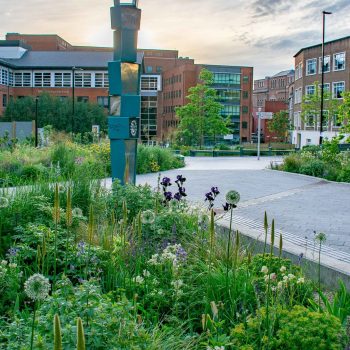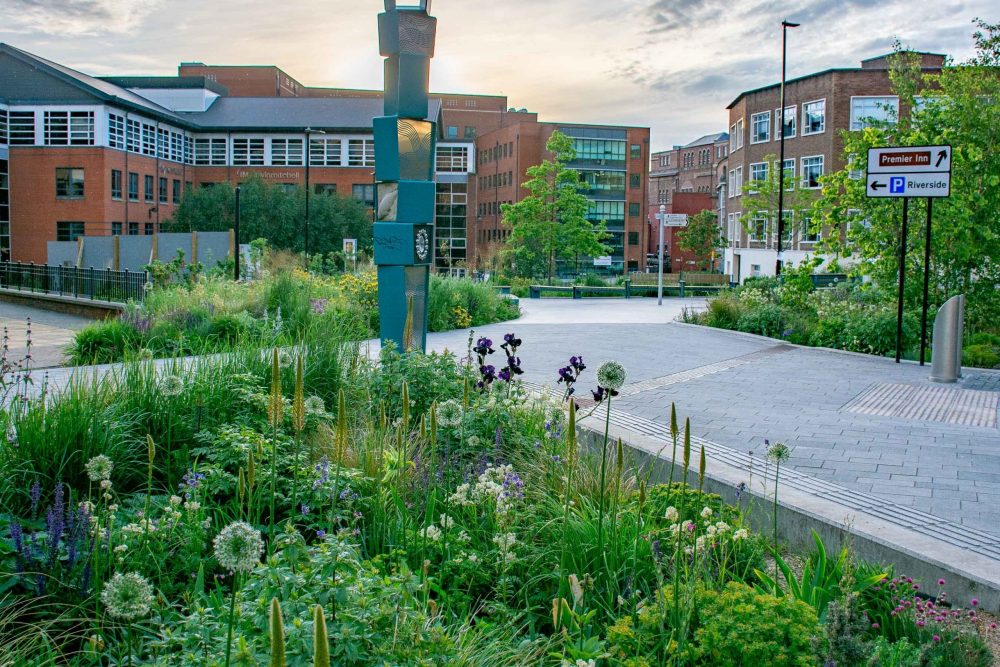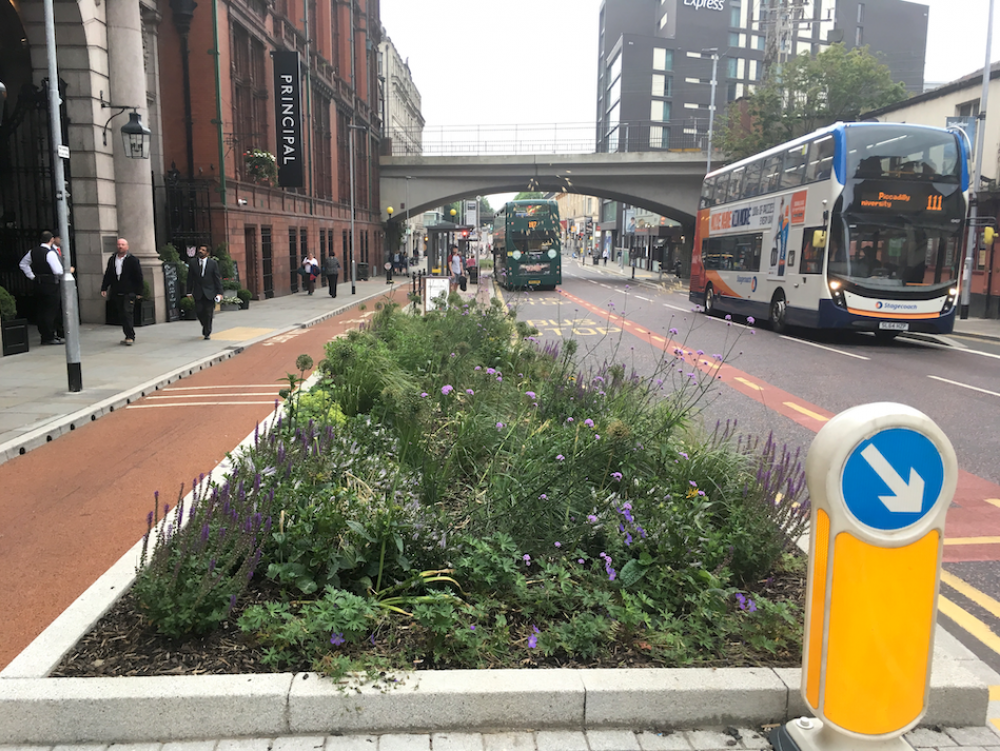Multi-functional greenspace
Tackling increasing amounts of rainfall, flooding and air pollution is a big challenge for our town centres. Recent years have seen greater understanding of how the physical environments of our town centres can be redesigned to address these problems – and make town centres more colourful, attractive and family-friendly.
That’s what we mean by multi-functional greenspace: as well as tackling the climate emergency, it makes our towns more attractive and better for health, well-being and biodiversity.
As well as the examples and resources below, check out the Streets and Spaces section of the Toolkit. It has more information on multi-functional green spaces which are good for people and the environment.

Sheffield Grey to Green
Since 2016, Grey to Green has brought the colour and nature from Sheffield’s parks and gardens into its city centre, turning once dull streets in vibrant public spaces. The first phase replaced redundant road space on West Bar, in front of the central law courts, with wild flowers, trees and shrubs. The new public space is dotted with public art reflecting local heritage, and benches offer space to enjoy the sights and scents of plants and wildlife. The new public space doubles up as a rain garden, moderating the flow of water and creating innovative sustainable drainage in a part of Sheffield that has twice been ravaged by floods.
Subsequent phases will create a total of 1.3 kilometres of attractive new linear public spaces, creating an attractive setting for existing and new investment and jobs, an improvement in the city’s resilience to climate change, and improving connectivity.

Greening Grey Infrastructure
Recent collaborative research led by the University of Glasgow explored the question: How do we green the parts of our cities and towns that need to remain grey for their primary function like seawalls, pavements and bridges? The report of this 18 month study was guidance that is relevant to all our towns. The Urban Bundle appendix in particular gives plenty of examples of ways in which towns can be greened, including:
- Tree, orchard and hedge planting in public spaces.
- Rain gardens in car parks and along streets and in car parks.
- Planted areas rather than traffic islands to separate carriageways.
- Green screens or ‘living walls’ around schools and other buildings and premises.
- Green retaining walls alongside railways and elsewhere.
- Planting as part of street furniture like benches.
- Green embankments and reed beds along watercourses.
- Green arches and pillars for climbing plants.
- Bee walls, bricks and benches.
For towns on rivers or the coast, the Coastal Bundle appendix provides a range of examples which can be used to green river and coastal areas to improve biodiversity of flood risk management measures and where we can make space on land, they can help us adapt our cities and towns to be more climate resilient to sea level rise risks.

Resources for multi-functional greenspace
Green Infrastructure: Design and Placemaking. Scottish Government advice on key design issues and techniques which can help to incorporate green infrastructure into place-making at all scales, illustrated by case studies for inspiration.
Greenspace Scotland provides lots of information and support about making more of urban greenspace, including for example their ParkPower programme which explores how green spaces can become areas that support key energy infrastructure like community power stations or electric vehicle charging.
Green Action Trust is an environmental delivery body which works in partnership with Scotland's Towns Partnership. Their work is focussed on delivering environmental and regeneration outcomes for Scotland. They provide support on policy, programme and project development, delivery and evaluation. Read the ‘our services’ page on their website for more information on what they do.
Play Scotland focuses on the delivery of children and young people’s right to play in Scotland. The website includes a range of useful resources, including Free to Play: a guide to creating accessible and inclusive public play spaces.
Architecture and Design Scotland has a webpage full of interesting information about Designing for a Changing Climate.
NatureScot has useful statistics on the value of urban greenspace.
MyParkScotland is an initiative, run by Greenspace Scotland and others, to help people discover and support their local parks. It includes news and information on parks around the country, how to get involved in your local park, an events diary, news about parks and crowdfunding.